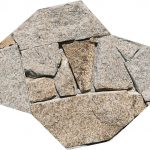The Versatility and Durability of Precast Cultured Stone A Comprehensive Guide

Introduction
In the realm of construction and design, the utilization of precast cultured stone has become increasingly popular due to its versatility, durability, and aesthetic appeal. This innovative building material offers a cost-effective and efficient solution for achieving the look of natural stone without the associated drawbacks. In this comprehensive guide, we will explore the various aspects of precast cultured stone, including its composition, manufacturing process, installation methods, benefits, and applications in the construction industry.
Composition of Precast Cultured Stone
Precast cultured stone, also known as artificial or manufactured stone, is a composite material made from a mixture of cement, aggregates, pigments, and other additives. The primary components of precast cultured stone include Portland cement, lightweight aggregates such as sand or crushed stone, and iron oxide pigments for coloration. These ingredients are combined to create a moldable mixture that mimics the appearance and texture of natural stone.
Manufacturing Process
The manufacturing process of precast cultured stone involves several steps to ensure the production of high-quality, consistent products. The process typically begins with the selection of molds that reflect the desired shape and texture of the stone. Once the molds are prepared, the mixture of cement, aggregates, pigments, and additives is poured into the molds and allowed to cure.
After the stone pieces have hardened, they are removed from the molds and undergo a finishing process to enhance their appearance. This may include sanding, painting, or sealing to achieve the desired texture and color. The final product is then ready for installation in various construction projects.
Installation Methods
Precast cultured stone can be installed using a variety of methods, depending on the specific requirements of the project and the desired aesthetic outcome. One common installation method is the use of mortar to adhere the stone pieces to the substrate. This process involves applying a layer of mortar to the back of the stone pieces and pressing them into place on the wall or surface.
Another popular installation method is the use of mechanical fasteners, such as screws or nails, to secure the stone pieces to the substrate. This method is often preferred for its ease of installation and ability to withstand environmental factors.
stepping stones of Precast Cultured Stone
Precast cultured stone offers a wide range of benefits that make it an attractive choice for construction projects. One of the primary benefits of precast cultured stone is its cost-effectiveness compared to natural stone. Precast cultured stone is more affordable to produce and install, making it a budget-friendly option for achieving the look of natural stone.
In addition to cost savings, precast cultured stone is also highly durable and resistant to weathering, making it well-suited for exterior applications. Unlike natural stone, precast cultured stone is less prone to cracking, chipping, or fading over time, ensuring long-lasting beauty and structural integrity.
Furthermore, precast cultured stone is available in a variety of colors, shapes, and textures, allowing for endless design possibilities. Whether replicating the look of traditional stone masonry or creating a modern aesthetic, precast cultured stone can be customized to suit the unique vision of any project.
Applications in the Construction Industry
Precast cultured stone finds a wide range of applications in the construction industry, from residential homes to commercial buildings and landscaping projects. One common use of precast cultured stone is in the construction of exterior facades, where it can be used to create a striking and durable finish that mimics the look of natural stone.
Additionally, precast cultured stone is often used for interior applications such as accent walls, fireplaces, and feature elements. Its lightweight nature and ease of installation make it a versatile choice for adding texture and visual interest to interior spaces.

Moreover, precast cultured stone is also utilized in landscaping projects to create retaining walls, pathways, and outdoor living spaces. Its ability to withstand harsh weather conditions and maintain its appearance over time makes it an ideal choice for enhancing outdoor environments.
Conclusion
In conclusion, precast cultured stone offers a cost-effective, durable, and versatile solution for achieving the look of natural stone in construction projects. From its composition and manufacturing process to installation methods, benefits, and applications, precast cultured stone provides endless possibilities for creating stunning and long-lasting designs. Whether used for exterior facades, interior accents, or landscaping features, precast cultured stone continues to be a popular choice among architects, designers, and builders seeking to enhance the aesthetic appeal and functionality of their projects.
